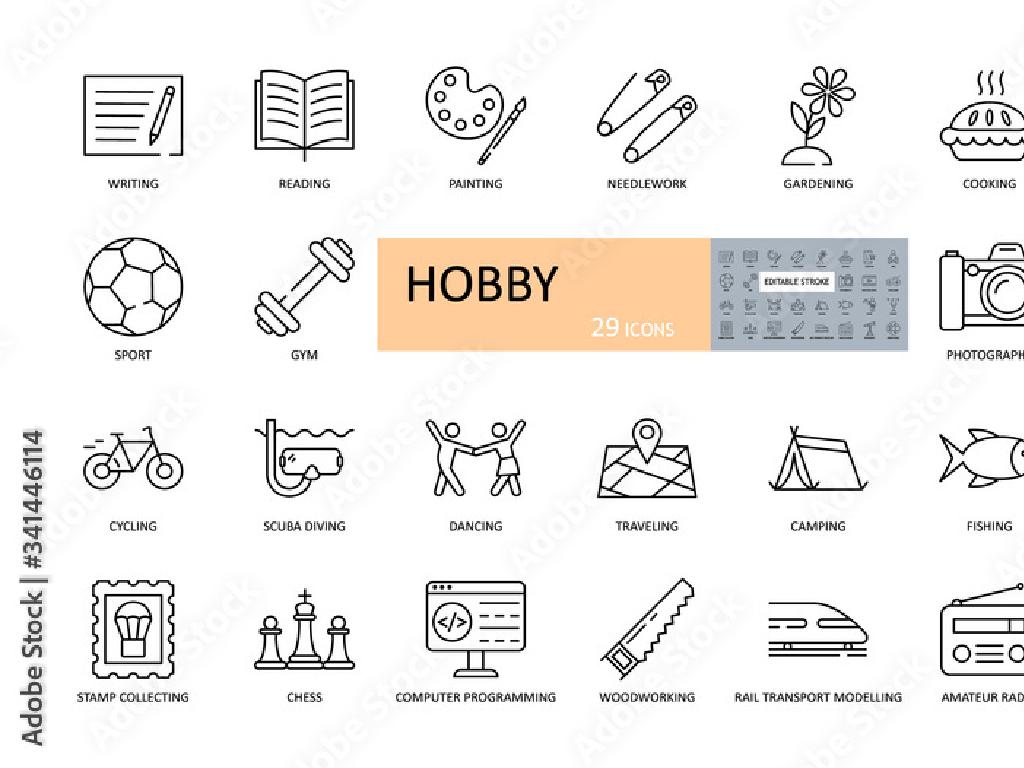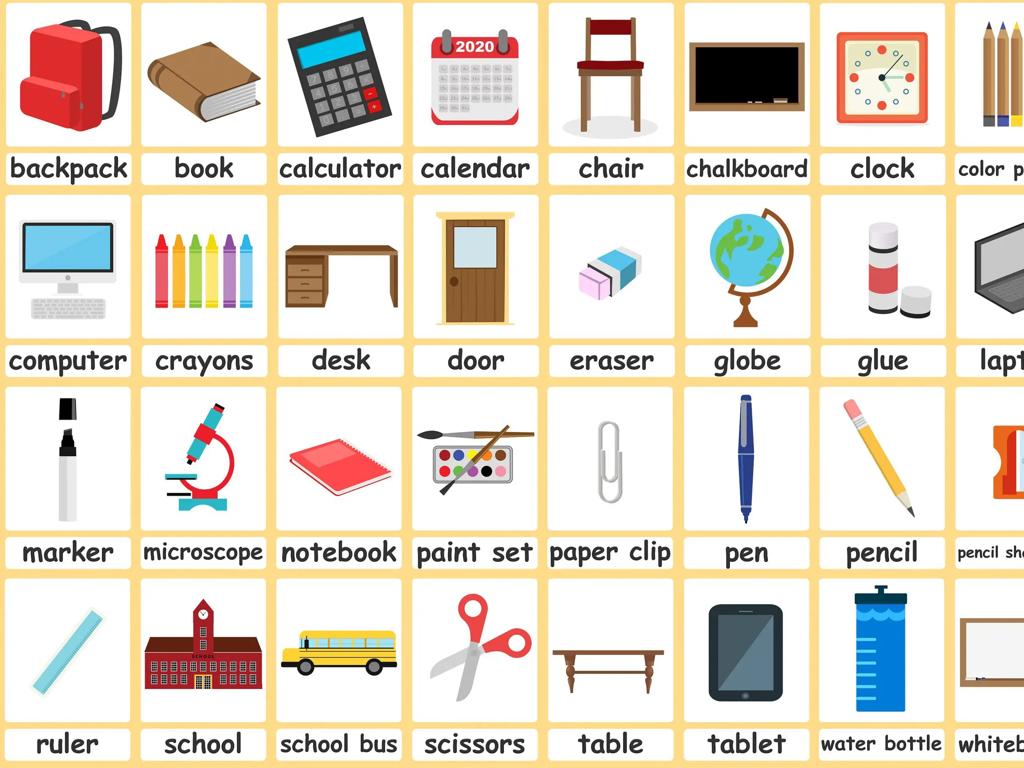Identify Human And Physical Features
Subject: Social studies
Grade: First grade
Topic: Physical Geography
Please LOG IN to download the presentation. Access is available to registered users only.
View More Content
Exploring Our World: Human and Physical Features
– What is Physical Geography?
– Human Features of Earth
– Buildings, roads, bridges are human features.
– Physical Features of Earth
– Mountains, rivers, beaches are physical features.
– Becoming Little Geographers
|
This slide introduces first graders to the basics of physical geography, focusing on the distinction between human and physical features of the Earth. Begin by explaining what geography is: the study of places and the relationships between people and their environments. Highlight that human features are things that people build, like homes, schools, and parks, while physical features are natural, like lakes, mountains, and deserts. Encourage the students to think about the different features they see around them every day and to be curious about the natural world. This will set the foundation for them to understand how humans and nature shape the landscape.
Exploring Our World: Physical Geography
– What is Physical Geography?
– It’s the study of Earth’s land, water, and air.
– Understanding Earth’s surfaces
– Mountains, rivers, and deserts are part of Earth’s surface.
– Human vs Physical features
– Human features are things people build like houses and bridges.
– Why geography is important
– Helps us know where and why things are on Earth.
|
This slide introduces first graders to the concept of physical geography, which is the study of the physical features of the Earth. It’s important to explain that physical geography includes natural formations like mountains, rivers, and deserts. Contrast these with human features, which are things that people create, such as buildings, roads, and bridges. Emphasize the importance of geography in understanding the world around us, including where things are located and why they are there. Use simple language and examples that are relatable to their everyday experiences, such as the school they attend (human feature) and the playground or park they play in (physical feature).
Exploring Physical Features
– Nature creates physical features
– Mountains, rivers, and forests
– Examples: Rocky Mountains, Mississippi River, Amazon Rainforest
– Physical features near us
– Think of places like parks, hills, or lakes nearby
– Understanding our geography
|
This slide introduces first graders to the concept of physical features in geography. Start by explaining that physical features are parts of the Earth’s surface that are natural, like mountains, rivers, and forests. Show pictures of these features to help students visualize them. Ask the students if they know of any physical features near the school to make the learning experience more relatable and engaging. This could be a small hill, a local river, or a nearby forest. Encourage them to think about the physical features they see on their way to school or during trips with their families. The goal is to help students recognize and appreciate the natural environment around them.
Exploring Human Features
– Human features are made by us
– Examples: buildings, roads, bridges
– Like schools, homes, and playgrounds
– Let’s identify daily human features
– Think of where we live, learn, and play
– Understanding our built environment
|
This slide introduces first graders to the concept of human features in physical geography. Human features refer to things that have been created by people, as opposed to natural features like mountains or rivers. Start by explaining that the places where they live, the roads they travel on, and the bridges they cross are all human features. Encourage the students to think about and name human features they encounter on their way to school or in their neighborhood. This will help them connect the concept to their everyday lives and understand how we shape our environment. Use pictures of familiar local structures to make the lesson more engaging.
Exploring Our World: Human and Physical Features
– Observe a picture together
– Differentiate human & physical features
– Human features like buildings, roads. Physical features like mountains, rivers.
– Understand features to learn about Earth
– Discuss why features are important
– Features tell us how people live, the Earth’s natural landscapes.
|
This slide is aimed at helping first graders identify and differentiate between human-made and natural physical features in geography. Start with a picture that includes both types of features, such as a landscape with mountains (physical) and a bridge (human). Ask the students to observe and point out what they see. Guide them to categorize the features they mention into human-made or natural. Explain that understanding these features helps us learn about how people interact with the Earth and how the natural world shapes our lives. Encourage them to think about why certain features are important and how they affect us daily.
Exploring Our Neighborhood
– Look at a neighborhood map
– Find physical & human features
– Physical: trees, rivers; Human: buildings, roads
– Use stickers to mark features
– Place a sticker on each feature you identify
– Discuss what we’ve found
|
This slide is designed to introduce first graders to the concept of physical and human features in geography through an interactive map activity. Begin by showing a simple map of a neighborhood. Explain that physical features are natural parts of the land like hills, lakes, and forests, while human features are things that people have made, like houses, roads, and schools. Provide stickers and ask the students to place them on the map to mark different features they find. After the activity, discuss the features they marked to reinforce their understanding. This hands-on activity will help students to visually differentiate between the two types of features and remember them better.
Class Activity: Feature Hunt
– Let’s go on a feature hunt!
– Find and draw a human feature
– Examples: a picture, a chair, or a book
– Find and draw a physical feature
– Examples: a plant, a window, or a stone
– Share your drawings with the class
|
This activity is designed to help first graders distinguish between human and physical features in their immediate environment. A human feature is something created by humans, like buildings, roads, or bridges. A physical feature is a natural part of the earth, like mountains, rivers, or trees. Instruct students to look around the classroom and identify one of each type of feature, then draw them on a piece of paper. Afterward, have a show and tell session where each student presents their drawings and explains why they chose those features. This will help reinforce their understanding of the difference between human-made and natural objects.
Great Work, Young Geographers!
– You’ve become geography explorers
– Learned about human & physical features
– Human features like buildings, roads. Physical features like mountains, rivers.
– Geography helps us know our world
– It connects us to different places and cultures.
– Keep observing the environment around you!
|
Congratulations to the class for their hard work and enthusiasm in learning about human and physical features in geography. Reinforce the idea that human features are things created by people, like homes, schools, and parks, while physical features are natural, like lakes, mountains, and deserts. Emphasize the importance of geography in understanding the relationship between people and the environment. Encourage the students to keep exploring and observing the world around them, noticing the human and physical features they come across in their daily lives. This will help them develop a deeper appreciation for the diverse planet we live on.






